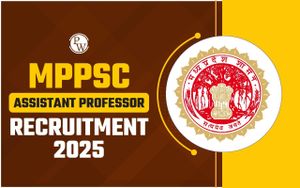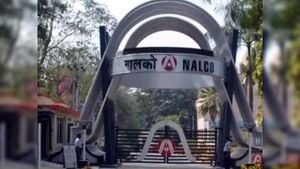A new methodology utilizing the Metaheuristic Bat algorithm (MBA) has shown promise for revolutionizing subsurface exploration of mineral and ore resources. This innovative approach enhances gravity data analysis, enabling geoscientists to obtain more accurate estimations of subsurface structures.
The study details how combining the MBA with the second horizontal gravity gradient (SHG) method allows researchers to improve the recovery of subsurface features by effectively filtering out regional effects. This significant development aims to advance mineral resource exploration and provide important insights for studying volcanic activity.
Gravity data serves as a powerful tool for non-invasively probing the Earth's subsurface, displaying variations related to rock types, density differences, and hidden structures like faults and cavities. By adopting advanced methodologies like MBA, which mimics the echolocation techniques of bats, scientists have been able to address complex optimization challenges surrounding gravity data interpretation.
The research team conducted exhaustive evaluations using various synthetic datasets to assess the effectiveness of the proposed MBA approach under different geological conditions. They demonstrated the algorithm's ability to accurately estimate subsurface parameters even when faced with challenges such as noise and complex geological features.
Field data from three distinct locations—Canada, India, and Cuba—were analyzed, yielding satisfying results for real-world applications. Notably, the Mobrun gravity anomaly located near Rouyn-Noranda, Quebec, served as one of the key sites where the new methodology was showcased.
"By integrating SHG with the metaheuristic Bat algorithm (MBA), we achieve precise estimations of subsurface structures," the authors reflected, highlighting the transformative nature of this approach. This development could significantly benefit various fields, including mining, environmental assessments, and hazard mitigation by providing enhanced geological insights.
Through rigorous validation and testing, researchers found the MBA approach not only met the performance standards of traditional methods but exceeded them—offering greater adaptability to noise and variances encountered during gravity surveys. The study outcomes reiterate the algorithm's potential to revolutionize subsurface analysis.
The research team's findings indicate the effectiveness of their method for distinguishing subsurface anomalies and for accurately mapping mineral resources, which could lead to more efficient extraction processes. Looking forward, they hope to see their methodology inspire new research directions aimed at optimizing geological explorations.
Further advancements might include tailoring the algorithms for specific geological contexts or integrating them with other geophysical measurement techniques. This kind of interdisciplinary approach is likely to enrich our geological knowledge base and refine the technologies employed within the resource exploration sector.



